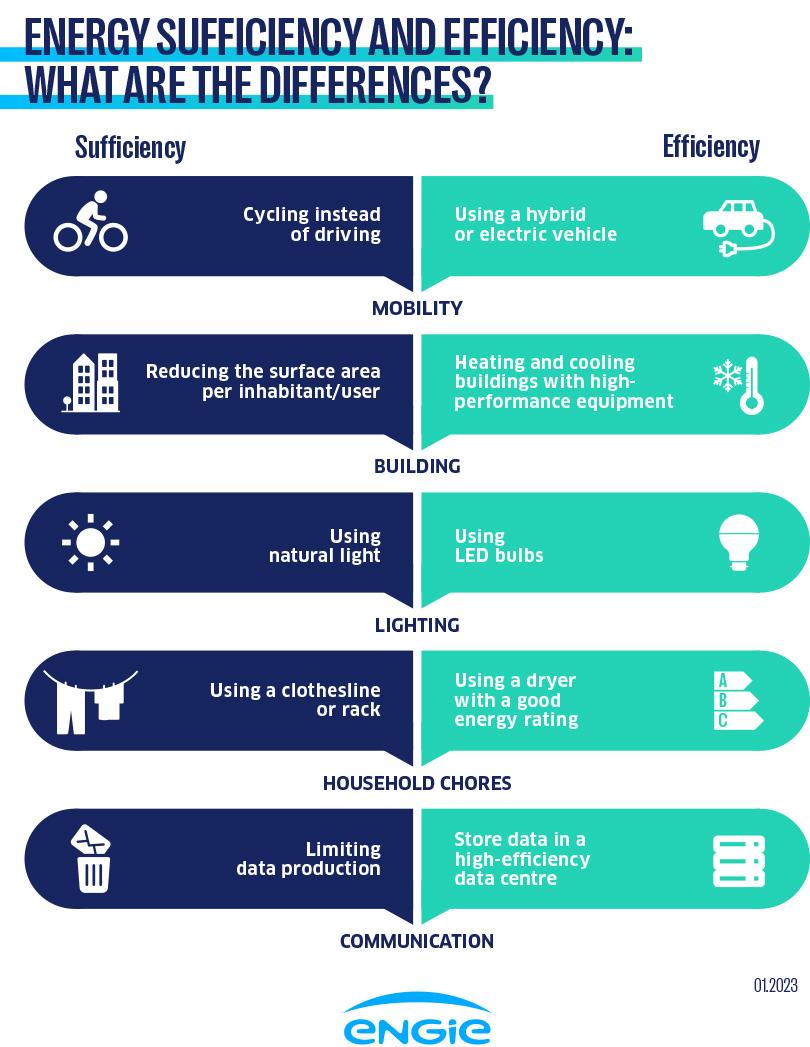
Faced with the urgency of climate change and the increased scarcity of energy and mineral resources, the current carbon-based energy model must make the transition towards a carbon-free world. In order to successfully carry out this transition, relying solely on a model centred exclusively around renewable energy and energy efficiency is not enough, and technology alone cannot be the only solution. This is where sufficiency comes into play: transforming our habits and lifestyles is equally as vital for the energy transition.
Energy sufficiency: definition and examples
Energy sufficiency refers to the deliberate and structured reduction of energy consumption. In addition to a decrease, it influences uses and pushes for a change in behaviour, both on an individual and collective level. It aims to reduce demand, and therefore reduce the strain on renewable sources.
For an individual, this may imply limiting the temperature in your house, for an employee, carpooling to work, for a public authority, developing bicycle paths in a municipality, or for a company, encouraging work from home when possible.
Sufficiency in all its forms!Negawatt, an NGO which brings together energy experts, is currently working on energy scenarios (energy model, way of consuming and producing energy) to make the transition a success. It has identified three types of energy sufficiency:
|
Shifting from emergency energy sufficiency to sustainable sufficiency...
2022 marks a turning point in favour of energy sufficiency. Due to the conflict between Russia and Ukraine, Europe, in particular, has witnessed higher and more volatile energy prices (oil, gas). In order to cope with the shortage of Russian gas as well as the winter, public authorities have called for “emergency energy sufficiency” to preserve gas supply stocks as much as possible for individuals, communities and businesses. However, this “non voluntary” sufficiency provides us with an opportunity to question our lifestyles and consumption habits, and the waste that they currently generate. After all, the best energy is the energy we can save.
Sufficiency: one of the three pillars of the energy transition
Sufficiency is one of the three pillars of the energy transition and is currently deployed in France and Europe by the public authorities to reduce our greenhouse gas emissions and limit global warming. Renewables and energy efficiency make up the two other pillars of the energy transition. Driven by public authorities, everyone is called upon to be more energy sufficient: companies, communities, citizens, etc. This collective initiative is vital to the success of the energy transition.